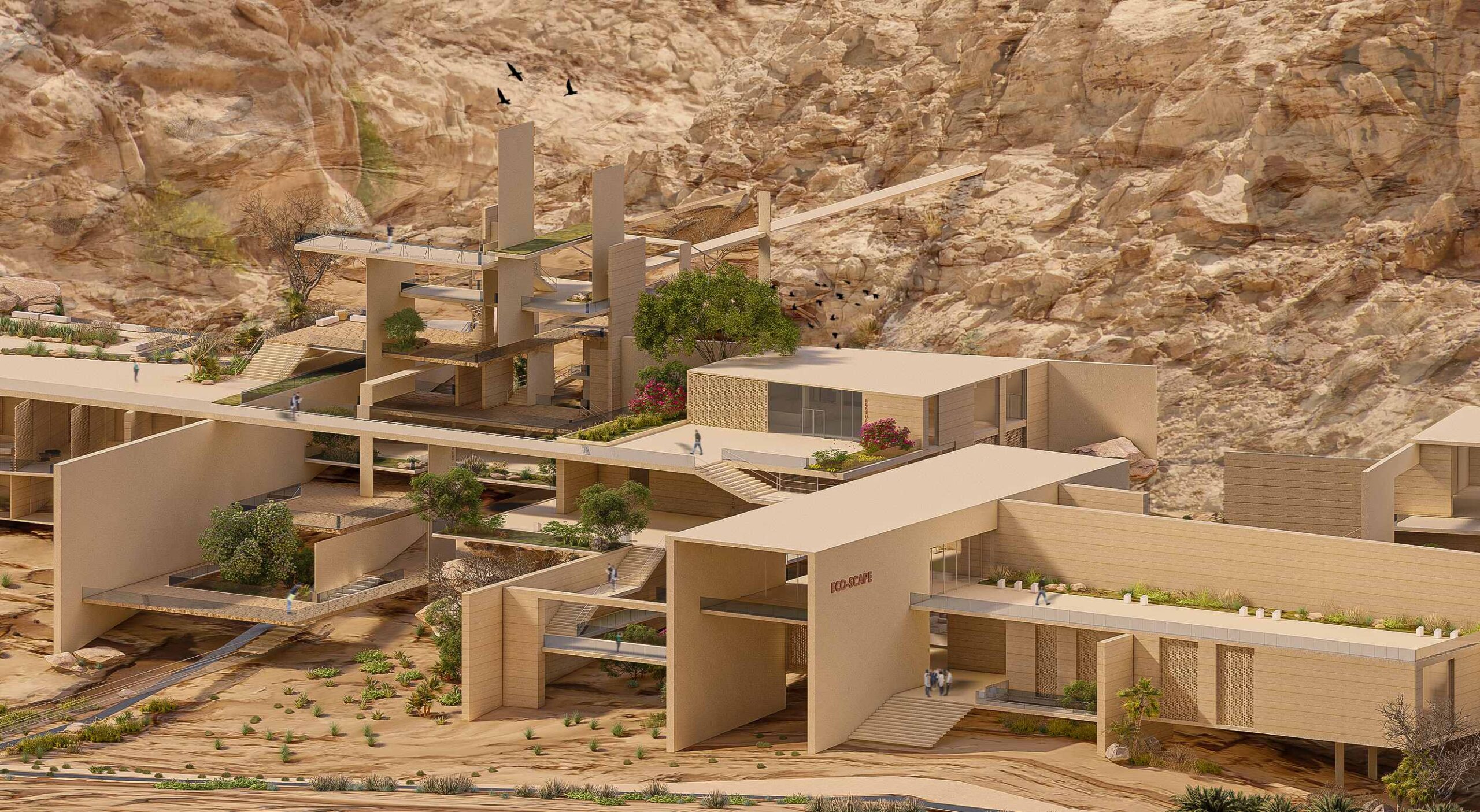

University : Jordan University of science and Technology
Tutor(s) : Arch Rania Rawwash
Project Description
This project presents a new way to transform architecture from a space into a tool to display important elements without compromising them. This approach involves understanding and respecting natural elements while using an architectural language that enhances their value. In this case, the focus is on the biodiversity of Wadi Bin Hammad in Jordan.
As visitors travel along the desert road towards Wadi Bin Hammad, they witness a gradual revival of life. Upon arrival, they are greeted by a stunning sight of a green paradise within a rocky crevice, hidden within the arid desert landscape. This striking contrast has earned Wadi Bin Hammad its nickname, “Hidden Paradise.”
The project concept was inspired by a hike through Wadi Bin Hammad, where plants were observed thriving in the rocky terrain. The design includes a “natural gallery,” a void in the floor that fosters plant growth and allows them to spread naturally. This innovative feature allows visitors to experience the region’s unique flora in its native environment.
The visitor experience is designed to be flexible and personalized. Guests can choose their own itineraries based on the time available to them, ensuring diverse and enriching encounters with the site’s offerings. Regardless of the route taken, each area within the project offers a unique interaction with biodiversity. Visitors leave with a deeper understanding of the interconnectedness and diversity of the natural world.
Key Components:
The visitor journey is designed to be flexible and personalized, promoting exploration at a pace that suits each visitor, creating a deep connection to the diverse offerings the site has to offer. The project also aligns with a broader initiative to create a national walking trail that connects key sites across Jordan. It demonstrates how architecture can celebrate and preserve biodiversity at both a regional and national level.
Established in 2012, Tamayouz Excellence Award is an unaffiliated, independent initiative that aims to advance the profession of architecture academically and professionally. Tamayouz is dedicated to supporting aspirational and transformative projects that tackle local and global challenges and that are informed by a holistic understanding of context.